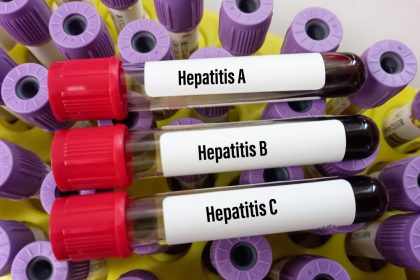Few discomforts disrupt daily life like the constant pain of a sore throat. Every swallow becomes a reminder of inflammation, making eating, drinking, speaking and even sleeping difficult. This persistent irritation explains why finding fast relief becomes an urgent priority when throat pain strikes.
Sore throats occur through several mechanisms, each requiring slightly different approaches for optimal relief. Viral infections cause approximately 80% of sore throats, triggering inflammation as the immune system fights the invading pathogen. Bacterial infections, particularly strep throat, account for about 10% of cases and often produce more severe pain with potential complications if left untreated. The remaining cases stem from environmental irritants, allergies, muscle strain, or acid reflux—conditions that benefit from targeted interventions.
Understanding your particular sore throat type helps determine the most effective relief strategy. Viral sore throats typically develop gradually with accompanying cold symptoms like coughing and congestion. Bacterial infections often produce sudden, severe pain frequently accompanied by fever, visible white patches, and swollen lymph nodes. Environmental irritation typically fluctuates with exposure levels and produces a “scratchy” rather than deeply painful sensation.
The good news is that regardless of cause, several proven remedies provide significant relief within minutes. By implementing these strategies at the first sign of discomfort, you can dramatically reduce recovery time while minimizing the impact on your daily activities.
12 fast-acting sore throat solutions
These twelve remedies offer the quickest path to relief, with options suitable for every situation from middle-of-the-night pain to more persistent throat inflammation:
1. Salt water gargling for rapid inflammation reduction
Salt water gargling stands as perhaps the most consistently effective home remedy for immediate sore throat relief. This simple solution works through multiple mechanisms to reduce pain and inflammation within minutes of application.
The osmotic effect of properly concentrated salt water pulls excess fluid from inflamed throat tissues, reducing swelling and associated pain almost immediately. This dehydrating effect explains why relief often begins during the gargling process itself. As tissue swelling decreases, nerve compression diminishes, directly lowering pain sensation.
Salt water also creates a temporarily hostile environment for both bacteria and viruses, potentially reducing pathogen levels on throat surfaces. While not powerful enough to eliminate infections completely, this mild antimicrobial effect may help slow pathogen reproduction during critical early infection stages.
For maximum effectiveness, dissolve half a teaspoon of salt in eight ounces of warm (not hot) water. Gargle for 30 seconds, reaching as far back in the throat as comfortable, then spit out completely. Repeat every 1-2 hours during peak discomfort. Most people report noticeable improvement after the very first application, with cumulative benefits from regular repetition.
The warm water component provides additional therapeutic benefit by increasing blood flow to throat tissues, bringing infection-fighting white blood cells and nutrients that support healing while carrying away inflammatory compounds.
2. Honey: Nature’s throat coat with antimicrobial power
Honey provides one of the fastest and most pleasant sore throat remedies available, particularly for viral causes. Its effectiveness stems from multiple healing properties that work synergistically to both coat irritated tissues and fight underlying infection causes.
The thick, viscous texture of high-quality honey creates a protective physical barrier over irritated throat surfaces, reducing further irritation from swallowing and breathing. This coating effect explains the immediate relief many experience from the very first teaspoon. The protection continues working for 20-30 minutes after consumption, making honey particularly valuable before meals or sleep.
Beyond physical protection, honey contains powerful antimicrobial compounds including glucose oxidase (which produces hydrogen peroxide upon contact with body fluids) and various phenolic acids. These natural compounds help reduce bacterial and viral loads on throat surfaces without harming beneficial bacteria, unlike conventional antiseptics.
Anti-inflammatory properties further enhance honey’s effectiveness through compounds that inhibit cyclooxygenase pathways involved in pain and inflammation signaling. This explains why honey often reduces pain more effectively than simple syrups with similar sweetness and texture.
For fastest relief, consume one tablespoon of raw, unprocessed honey alone or stirred into warm (not hot) tea. Allow the honey to coat the throat by swallowing slowly. Repeat every 2-3 hours as needed. Warm herbal teas with honey prove particularly effective by combining soothing heat with honey’s protective coating.
Important note: Never give honey to infants under 12 months due to botulism risk in this vulnerable population.
3. Licorice root: The overlooked throat soother
Licorice root delivers one of the most potent natural anti-inflammatory effects for throat tissue through compounds rarely found in other remedies. This traditional herb acts through multiple mechanisms that specifically target throat discomfort.
Glycyrrhizin, the primary active compound in licorice root, demonstrates impressive anti-inflammatory activity comparable to mild corticosteroids without associated side effects when used short-term. This compound specifically inhibits inflammatory mediators concentrated in mucosal tissues, making it particularly effective for respiratory passages.
Additional compounds in licorice create a protective mucilaginous coating over irritated throat surfaces, providing direct mechanical protection during swallowing. This demulcent effect complements the anti-inflammatory action for comprehensive relief that begins within minutes of consumption.
Antimicrobial properties further enhance licorice’s effectiveness, with research confirming activity against common throat pathogens including Streptococcus pyogenes (strep throat bacteria) and several respiratory viruses. This triple-action approach—anti-inflammatory, coating, and antimicrobial—explains licorice’s long history in throat remedy traditions worldwide.
For fastest relief, steep two teaspoons of dried licorice root in hot water for 5-10 minutes, strain, and sip slowly while still warm. Commercial licorice tea bags provide a convenient alternative, though checking for actual licorice root content versus flavoring is important. Specialized licorice lozenges offer an even more convenient option that maximizes direct contact time with irritated tissues.
Important note: Pure licorice should not be used for more than two weeks continuously or by people with high blood pressure, kidney disease, or certain hormone-sensitive conditions due to potential effects on cortisol metabolism with prolonged use.
4. Slippery elm: The tissue-repairing demulcent
Slippery elm bark provides one of the most effective protective coatings for irritated throat tissues through an unusually high concentration of mucilage compounds. This botanical remedy creates a thick, slippery gel when mixed with water, physically coating inflamed surfaces for immediate protection.
The protective gel adheres to irritated throat tissue, creating a barrier that shields sensitive nerve endings from further irritation during swallowing or speaking. This mechanical protection explains the rapid pain reduction many experience, often within 1-2 minutes of application.
Beyond simple coating, slippery elm contains compounds that actively reduce inflammation while promoting tissue healing. Research confirms its ability to stimulate nerve reflexes that increase mucus secretion in the throat, providing additional natural protection while diluting irritants that may be present.
Antioxidant compounds in slippery elm further support healing by neutralizing free radicals produced during the inflammatory process. This additional mechanism helps explain why slippery elm users often report faster recovery compared to using simple throat coatings.
For immediate relief, mix one tablespoon of slippery elm powder with enough hot water to create a thin paste, then add to a cup of warm water or tea and drink slowly. Commercial lozenges containing genuine slippery elm provide a more convenient option, allowing direct contact with throat tissues for 15-20 minutes per lozenge. For maximum benefit, use shortly before meals or sleep when throat irritation typically intensifies.
5. Strategic hydration techniques
Proper hydration provides fundamental support for throat healing, but strategic approaches deliver significantly faster relief than simply drinking water. Understanding hydration timing and temperature creates more effective intervention for throat pain.
Warm liquids typically provide more immediate relief than cold options by promoting increased blood flow to throat tissues, bringing infection-fighting white blood cells and nutrients while carrying away inflammatory compounds. This circulatory enhancement explains why warm broths and teas often reduce pain within the first few sips.
Cold hydration creates a different but equally valuable effect through mild numbing action that reduces pain perception, particularly valuable for very inflamed tissues. Brief cold exposure constricts blood vessels, potentially reducing swelling that contributes to nerve compression and associated pain.
The ideal hydration strategy combines both approaches: warm herbal teas or broths for longer-term circulation benefits, alternated with cold water or chemical-free ice pops for immediate numbing relief during periods of intense discomfort.
Hydration frequency matters as much as temperature, with small sips every 15-30 minutes proving more effective than larger amounts consumed less frequently. This regular moisture prevents the drying of mucous membranes that intensifies pain, particularly during sleep when dehydration commonly worsens.
Hydration content provides additional benefits when strategically selected. Broths deliver healing amino acids along with hydration, while certain herbal teas contribute additional anti-inflammatory compounds that enhance basic moisture benefits.
6. Garlic: Natural antibiotic and anti-inflammatory
Garlic offers one of the most potent natural antimicrobial options for throat infections through multiple compounds that target both bacteria and viruses. Its effectiveness stems primarily from allicin, a sulfur compound formed when fresh garlic is crushed or chopped.
Research confirms garlic’s impressive antimicrobial spectrum, showing activity against both gram-positive and gram-negative bacteria, including Streptococcus species responsible for strep throat. This broad-spectrum activity makes garlic particularly valuable during early infection stages when pathogen identification remains unclear.
Anti-inflammatory properties complement garlic’s antimicrobial effects through compounds that inhibit specific inflammatory enzymes. This dual-action approach explains why garlic often provides faster symptom relief than remedies addressing only pain or only infection.
For fastest sore throat relief, crush 1-2 fresh garlic cloves and steep in warm water for 5 minutes, then gargle with the resulting liquid. For those finding direct garlic too intense, mixing crushed garlic with honey creates a more palatable alternative while combining the benefits of both remedies.
The key to garlic’s effectiveness lies in proper preparation—crushing or chopping activates the enzyme alliinase that converts alliin to therapeutic allicin. This reaction requires approximately 10-15 minutes to complete, making fresh preparation superior to pre-packaged options for therapeutic purposes.
7. Ginger’s dual-action inflammation control
Ginger provides rapid sore throat relief through powerful anti-inflammatory compounds complemented by mild analgesic effects. This dual-action approach explains why many experience significant improvement within 15-30 minutes of consumption.
The active compounds in ginger, primarily gingerols and shogaols, inhibit cyclooxygenase enzymes involved in producing inflammatory prostaglandins. This mechanism mirrors how many pharmaceutical anti-inflammatories work, but with fewer side effects when used appropriately.
Research confirms ginger’s ability to reduce inflammatory markers throughout the body, with particularly notable effects on respiratory tract tissues. This targeted action makes it especially valuable for throat inflammation regardless of whether the underlying cause is viral, bacterial, or environmental.
A mild warming sensation further enhances ginger’s effectiveness by increasing blood circulation to throat tissues, bringing immune cells and nutrients that support healing. This circulation effect explains why fresh ginger typically provides faster relief than dried preparations with lower volatile oil content.
For quickest results, combine 1-2 inches of fresh ginger root (thinly sliced or grated) with hot water and steep for 5-10 minutes. Adding honey enhances both effectiveness and flavor. Commercial ginger teas provide a convenient alternative, though checking for actual ginger content versus flavoring proves important for therapeutic benefit.
For those preferring direct application, slowly chewing small pieces of raw ginger allows the active compounds to directly contact inflamed throat tissues. This method delivers the highest concentration of active compounds but proves too intense for some individuals.
8. Apple cider vinegar: Pathogen-hostile environment creator
Apple cider vinegar creates conditions inhospitable to many throat pathogens while supporting the body’s natural defenses. Its effectiveness for sore throats stems from both its acidic nature and unique biological compounds.
The acetic acid in apple cider vinegar temporarily alters throat pH, creating an environment where many pathogens struggle to reproduce while the body’s immune defenses work to eliminate the infection. This environmental modification explains why many experience reduced symptoms within hours of beginning apple cider vinegar treatments.
Beyond simple acidity, unpasteurized apple cider vinegar contains beneficial bacteria and enzymes that may support the throat’s microbiome—the balanced bacterial community that helps prevent pathogen overgrowth. This probiotic effect potentially helps restore throat flora disrupted by infection or antibiotics.
For effective relief, mix one tablespoon of raw, unfiltered apple cider vinegar with eight ounces of warm water and a tablespoon of honey (which masks the sour taste while adding its own therapeutic benefits). Gargle with this mixture for 30 seconds before swallowing or spitting out. Repeat hourly during peak discomfort.
The “mother” component—the cloudy substance visible in unpasteurized apple cider vinegar—contains many of the beneficial compounds, making unfiltered varieties significantly more effective than clear filtered options for therapeutic purposes.
9. Marshmallow root: The professional-grade throat coat
Marshmallow root provides one of the most effective protective coatings for irritated throat tissues through exceptionally high concentrations of mucilage compounds. This traditional remedy creates a thick, slippery layer that physically shields sensitive nerve endings from irritation.
The polysaccharides in marshmallow root form a gel-like substance when mixed with water, adhering to throat tissues significantly longer than many other coating remedies. This extended contact time explains the superior duration of relief many experience, often lasting 30-45 minutes from a single dose.
Anti-inflammatory properties complement the physical coating through compounds that reduce cytokine production involved in pain and swelling. This dual-action approach—physical protection plus chemical anti-inflammatory effects—explains marshmallow root’s historical reputation as a premium throat remedy.
Research confirms marshmallow root’s ability to stimulate cell-mediated immunity, potentially enhancing the body’s defense against underlying infections while providing symptom relief. This immune-supporting function adds long-term benefit beyond immediate pain reduction.
For fastest relief, steep two tablespoons of dried marshmallow root in a cup of cold water for 30-60 minutes (cold extraction better preserves the mucilage compounds). Strain and drink slowly, allowing maximum contact with throat tissues. Commercial marshmallow root lozenges or syrup provide more convenient alternatives with similar benefits.
10. Steam inhalation with essential oils
Steam inhalation delivers rapid relief for many sore throats by increasing moisture to dry, irritated tissues while the heat promotes improved circulation. When enhanced with specific essential oils, this therapy provides impressive symptom reduction often beginning within the first minute of treatment.
The primary mechanism involves rehydrating the mucous membranes of the throat, which frequently become dried and irritated during respiratory infections or environmental exposure. This immediate moisture restoration reduces the tight, scratchy sensation while supporting the throat’s natural protective mechanisms.
Increased blood flow from the warm steam brings additional immune cells to the infection site while carrying away inflammatory compounds. This circulatory enhancement explains the lasting improvement many experience after steam sessions rather than just temporary relief.
Essential oils significantly enhance basic steam benefits through specific therapeutic compounds. Eucalyptus oil contains eucalyptol, which research confirms has anti-inflammatory, antimicrobial, and mild analgesic properties specifically beneficial for respiratory tissues. Tea tree oil contributes additional antimicrobial action, while peppermint oil provides cooling sensation that reduces pain perception.
For maximum benefit, add 3-5 drops of essential oil to a bowl of hot steaming water, lean over with a towel creating a tent to trap the steam, and breathe deeply for 5-10 minutes. Commercial personal steam inhalers provide a more controlled alternative, particularly valuable for those with respiratory conditions requiring careful steam temperature management.
Important safety note: Essential oils should never be ingested or applied directly to the throat, and steam temperature should be carefully monitored to prevent burns.
11. Targeted throat sprays for precision relief
Throat sprays offer the advantage of delivering active ingredients directly to inflamed tissues for immediate action without dilution through the digestive system. This targeted delivery explains their remarkably fast onset compared to many oral remedies.
Pharmaceutical sprays containing benzocaine or phenol provide the fastest numbing effect, typically beginning within 15-30 seconds of application. This rapid action makes them particularly valuable for severe pain that interferes with eating, drinking, or sleeping. The direct numbing of sensitized nerve endings explains their effectiveness even for intense sore throats.
Natural spray alternatives containing propolis (a resinous compound collected by bees) demonstrate impressive effectiveness through multiple mechanisms. Research confirms propolis contains over 300 active compounds with combined antimicrobial, anti-inflammatory, and mild anesthetic properties specifically beneficial for throat tissues.
Concentrated herbal sprays incorporating sage, licorice, or marshmallow root provide another effective option. These botanical sprays combine traditional coating benefits with natural compounds that reduce inflammation and fight infection when delivered directly to affected tissues.
When using any throat spray, proper technique maximizes benefit: tilt the head back slightly, open mouth wide, and aim toward the back of the throat rather than the tongue or mouth. Avoiding eating or drinking for 15-30 minutes after application prolongs the therapeutic contact time.
For ongoing relief, alternating different spray types prevents receptor adaptation that can reduce effectiveness with frequent use of a single product. This rotation strategy maintains maximum relief throughout the recovery period.
12. Professional interventions for severe cases
While home remedies resolve most sore throats, certain situations warrant professional medical intervention for both faster relief and prevention of serious complications.
Strep throat, caused by Streptococcus pyogenes bacteria, requires antibiotics to prevent potential complications including rheumatic fever or kidney inflammation. This bacterial infection typically produces distinctive symptoms including sudden severe pain, fever without coughing, white patches on tonsils, and swollen neck lymph nodes. Rapid strep tests provide results within minutes, allowing immediate treatment initiation when indicated.
Prescription analgesic sprays containing stronger numbing agents than over-the-counter alternatives provide relief for extremely severe pain interfering with hydration or nutrition. These medical-strength preparations typically begin working within seconds and last significantly longer than consumer options.
Corticosteroid injections or oral steroids sometimes prove necessary for massive throat inflammation causing significant swelling that threatens breathing or swallowing. These powerful anti-inflammatory medications can reduce severe swelling within hours when standard approaches prove insufficient.
Professional guidance becomes particularly important for sore throats lasting more than 7 days despite home treatment, pain severe enough to prevent adequate hydration, difficulty breathing or swallowing, or unusual symptoms like joint pain or rash that might indicate complicated infections requiring specific interventions.
Creating your rapid relief protocol
Combining multiple approaches creates faster relief than any single remedy alone. This strategic multi-intervention protocol addresses different aspects of throat pain simultaneously:
Immediate relief steps (first 30 minutes)
Begin with salt water gargling to reduce initial inflammation and create a clean slate for subsequent remedies. The immediate swelling reduction from proper gargling provides the foundation for all additional interventions.
Follow with either honey (for viral causes) or apple cider vinegar with honey (for suspected bacterial causes) to coat irritated tissues while addressing possible infection sources. This coating step provides temporary protection for hypersensitive throat surfaces.
Apply targeted throat spray if pain remains severe enough to interfere with swallowing or speaking. This step provides rapid surface numbing that creates a window of reduced pain during which other remedies can be implemented.
Generate steam with appropriate essential oils for 5-10 minutes to rehydrate tissues and improve circulation to the affected area. This moisture restoration addresses the dry, scratchy component of sore throats that often intensifies other pain perceptions.
Ongoing management (throughout the day)
Implement strategic hydration by consuming warm therapeutic liquids (herbal teas, broths) every 30-60 minutes during waking hours. This consistent moisture prevents the dehydration that typically intensifies throat pain, particularly overnight.
Rotate between different coating agents (honey, slippery elm, marshmallow root) every 2-3 hours to maintain protective barriers on irritated tissues. This rotation prevents adaptation that can reduce effectiveness of any single remedy used continuously.
Use antimicrobial approaches including garlic and ginger preparations twice daily to address underlying infection causes rather than just symptoms. These natural antimicrobials complement the body’s immune response without disrupting beneficial throat flora.
Continue salt water gargling every 3-4 hours to maintain reduced inflammation throughout the recovery period. This simple therapy provides compounding benefits when used consistently rather than just for initial relief.
Nighttime preparation for uninterrupted sleep
Intensify all interventions 30-60 minutes before bedtime, when throat pain typically worsens due to reduced swallowing and increased mouth breathing. This preventive approach addresses pain before it intensifies rather than attempting to resolve severe discomfort after it develops.
Elevate the head with extra pillows to reduce acid reflux and post-nasal drip that often aggravate throat pain during horizontal positioning. This simple positional change prevents additional irritation sources during vulnerable sleep hours.
Place a humidifier near the bed to maintain optimal moisture levels throughout sleep. This environmental modification prevents the significant drying that typically occurs during sleep breathing, particularly for those who transition to mouth breathing due to nasal congestion.
Consider honey with warm herbal tea as the final consumption before sleep, allowing its coating properties to provide extended protection during the early sleep hours when swallowing frequency dramatically decreases.
By implementing these evidence-based interventions at the first sign of throat discomfort, you can significantly reduce both symptom severity and recovery duration. Remember that early intervention typically yields dramatically better results than waiting until pain becomes severe before beginning treatment.

















